
I went to Cuba looking for music, dance and rum – and I wasn’t disappointed. What I did not expect, however, was to find such a flourishing art scene. Art is a part of everyday life in Cuba, with countless free exhibitions throughout the country, impressive and extensive galleries, a wealth of street artists, and of course the numerous famous murals and statues.
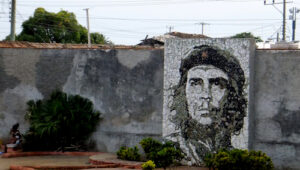
I was invited into a barber’s one afternoon to find that his room doubled up as his art studio, where he spent months painting each of his psychedelic pointillist-type works. This was by no means unusual: as selling to tourists can pay much better than most jobs, art acts as an excellent alternative mode of income. Furthermore, provisions from the government for art is fantastic, with so many government-funded art projects, such as this year’s Havana Biennial: exhibitions ranged from a wonderful ceramic exhibition on the iconic Malecón, with extensive explanations for each work bringing the works to life, to the Rafael Gomez Barros’ installation of giant ants swarming the outside of the Teatro Fausto, representing diasporic cultures.
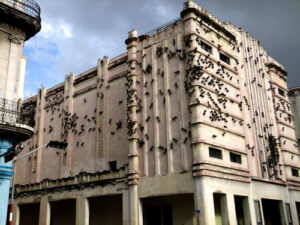
Havana has a lot of art to offer, from the under-visited ceramics museum to the huge Museo Nacional de Bellas Artes. The latter is split into two equally iconic buildings, with the International gallery, Palacio del Centro Asturiano, greeting you with a tower of bicycles as you walk through the doors.
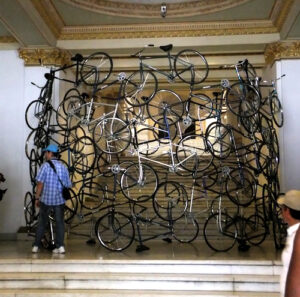
However, when in Cuba, Cuban art is surely the priority – and the Palacio de Bellas Artes, dedicated solely to Cuban art, does not disappoint. Organised chronologically, the early works show themselves to be heavily influenced by (or occasionally actually created by) European artists. There are occasional touches of Cuban individuality, with some Esteban Chartrand’s romanticised landscapes being a particular highlight. The next floor tells a completely different story. Moving away from European influence, many of the works on display here show a fierce political side, with the inevitable abundance of references to Che Guevara, but also to poverty and to America. In fact, some of the most powerful works were in the two temporary exhibitions: Sandra Ramos’ nostalgic works, and in particular Abel Barroso’s wildly creative look at the ‘immigration game’ – through the medium of pinball machines. Throughout the museum, there were only a handful of works with any sort of barrier: here, art can be experienced up close and in detail.
Street art flourishes throughout Cuba: the murals and painted bathtubs in Havana’s street party, Callejon de Hamel; the wealth of styles displayed by vendors in Trinidad – from lurid pop art to musky portraits to chaotic collages; the fiercely political anti-American murals of Santa Clara.
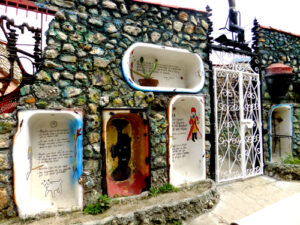
However, for a truly unique Cuban experience, combining the street art and windowsill art of everyday life with the gallery scene is Camaguey’s Casa de Arte Jover. The house of two of Cuba’s most prolific contemporary painters, Joel Jover and his wife Ileana Sánchez, the place is a mish-mash of styles, squeezed into their two front rooms, and mixed amongst their collected antiques, family photo montages and antiquated furniture. You can often see the artists themselves, who may offer you a seat as they paint in the studio just behind an arbitrary barrier. Whilst there, their dog came and joined me on the sofa – the dog which happens to be the subject of one of the pop art works. It is a rare opportunity to be able to actually a see a painting and its subject side by side in a ‘gallery’. Sanchez’s Barbie umbrella mobile is particularly striking, as is her preoccupation with Sprite and Coca Cola cans, which are prominent in a lot of her works – again highlighting an interesting fascination within a socialist country. Meanwhile, Jover’s expressionist works are made even more personal in this intimate setting.
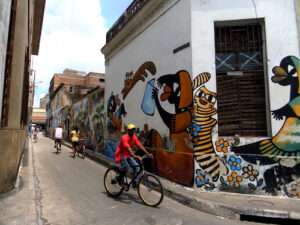
Cuba’s art scene shows the breadth of Cuban experience – from the multicoloured fiestas, to the dazzling beaches, to the harsh realities of poverty and the idiosyncrasies of living in a socialist country. It seems that in Cuba, it is art, perhaps more than music, that can truly capture the Cuban spirit in all its guises.

Wonderful article!
You have truly shopwn me something I enjoyed!
Now we have another reason for wanting to visit Cuba.